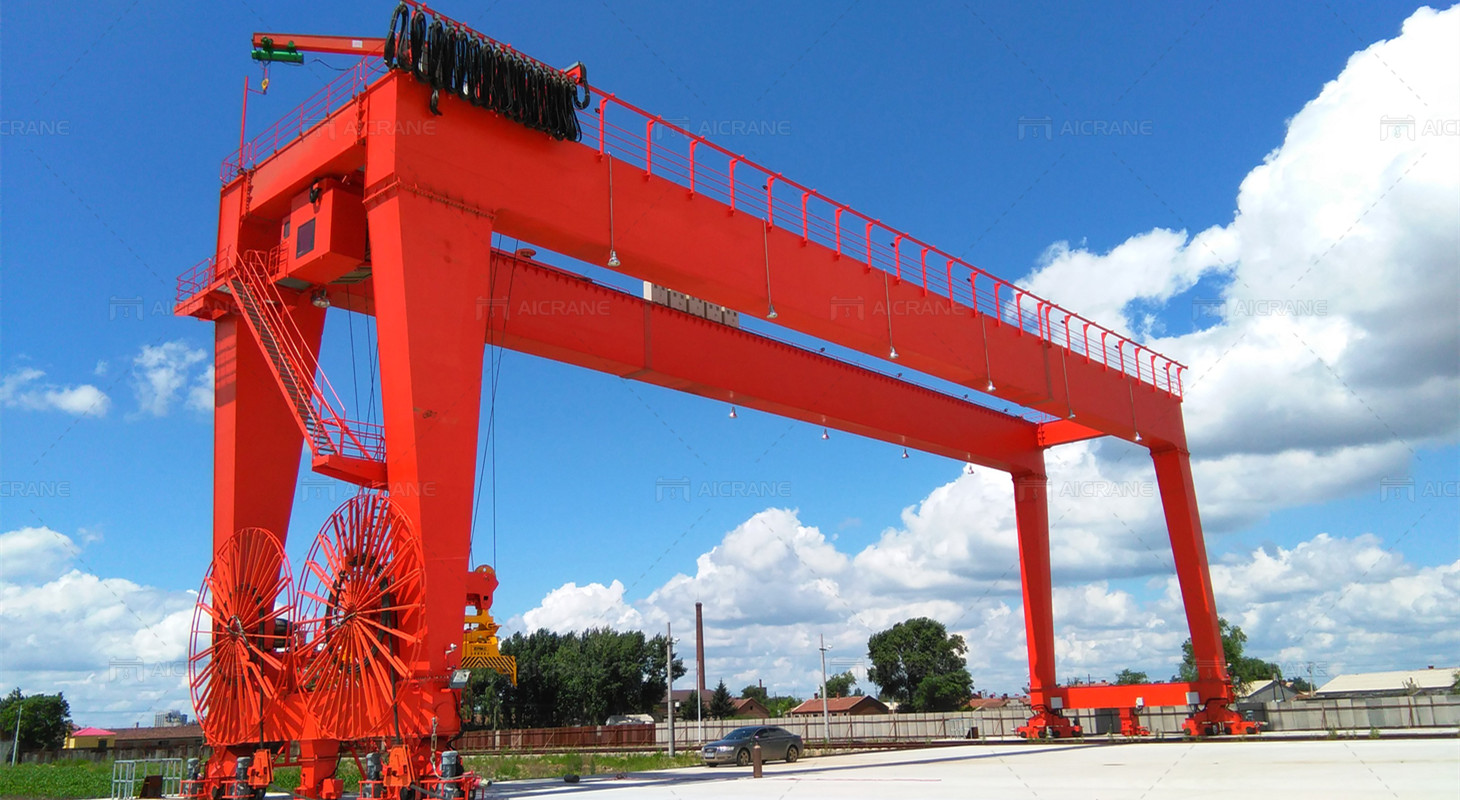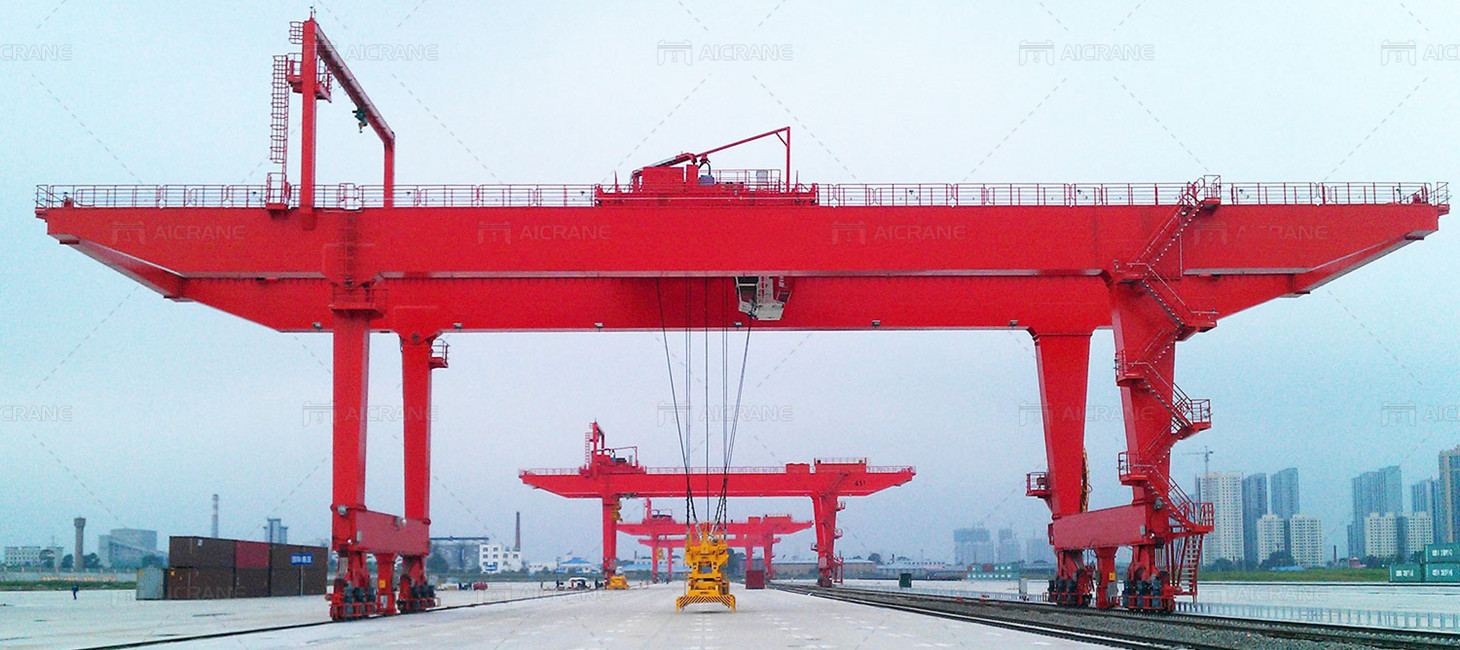Rail Mounted Gantry (RMG) cranes are essential pieces of equipment in modern container ports, providing an efficient and reliable means of handling containers between different modes of transport, such as ships, trucks, and trains. RMG cranes, with their precision and high capacity, are designed to handle heavy loads and operate in environments that require high levels of efficiency and safety. This article outlines the key steps and considerations for using an RMG crane in a port setting for container handling, covering everything from pre-operation checks to operational best practices and safety measures.

Understanding the RMG Crane
Before operating an RMG crane, it is crucial to have a solid understanding of its components and functionalities. An RMG crane typically consists of a large gantry structure that runs on rails, with a hoisting mechanism, spreader, trolley, and control cabin.
Gantry Structure: The gantry is the main framework of the RMG crane that spans the container yard, running along rails to cover the entire area. The crane moves longitudinally on these rails to position itself over containers.
Hoisting Mechanism: This mechanism is responsible for lifting and lowering containers. It includes cables, drums, and motors that provide the necessary power and control for vertical movement.
Spreader: The spreader is the device that attaches to the top of the container. It can adjust to different container sizes (typically 20-foot, 40-foot, or 45-foot containers) and locks onto the container’s corners to secure it during lifting and transport.
Trolley: The trolley moves horizontally across the gantry structure, positioning the spreader directly above the container for precise lifting and placement.
Control Cabin: The operator controls the crane from the cabin, which is equipped with advanced control systems, cameras, and sensors to monitor the crane’s operations.
Pre-Operation Checks and Preparation
Before starting the operation of an RMG crane, conducting thorough pre-operation checks is essential to ensure safety and efficiency.
Visual Inspection: Conduct a visual inspection of the crane to identify any visible damage, wear, or potential hazards. Check for loose bolts, frayed cables, or any other signs of mechanical issues.
Check Operational Systems: Test all control systems, including the hoisting mechanism, trolley movement, spreader operation, and safety devices. Ensure that the control cabin’s displays and controls are functioning correctly and that communication systems are operational.
Inspect the Rails and Yard Area: Ensure that the rails on which the RMG crane operates are clear of obstructions and in good condition. Inspect the yard area for any obstacles or debris that could interfere with the crane’s movement or the placement of containers.
Load Testing: Conduct a load test to verify that the hoisting mechanism and spreader can handle the intended weight without issues. This is particularly important if the crane has been idle for an extended period or after maintenance.
Safety Briefing: Hold a safety briefing with all personnel involved in the operation. Review the safety protocols, emergency procedures, and roles and responsibilities to ensure everyone is aware of the operational plan.
Operating the RMG Crane for Container Handling
Operating an RMG crane requires skill and precision, as it involves handling large, heavy containers in a busy port environment. The following steps outline the general process for using an RMG crane in container handling:
Positioning the Crane: The first step is to position the RMG crane over the container that needs to be moved. Use the control systems to move the gantry along the rails and align the trolley with the container’s location.
Aligning the Spreader: Once the gantry crane is in position, move the trolley to align the spreader directly above the container. Use the controls to lower the spreader slowly onto the container, ensuring that it is properly aligned with the container’s corner castings.
Locking the Spreader: Once the spreader is in place, engage the locking mechanisms to secure the container. The spreader will lock onto the container’s corners, allowing it to be lifted safely.
Lifting the Container: After securing the container, use the hoisting mechanism to lift it vertically. Lift the container to a safe height to clear any obstacles in the yard or on the rails.
Transporting the Container: Move the trolley along the gantry to transport the container to its new location. This could be to a different spot in the container yard, onto a truck, or onto a train for further transport.
Lowering the Container: Position the container over the designated location and lower it slowly and carefully. Ensure that the container is placed accurately in its designated spot, aligning with other containers or the vehicle onto which it is being loaded.
Releasing the Spreader: Once the container is securely placed, disengage the spreader’s locking mechanisms and lift the spreader away from the container. The spreader should be retracted fully before moving the trolley back to its starting position.

Safety Considerations
Safety is a paramount concern when operating an RMG crane in a port. The following safety measures should be strictly adhered to:
Operator Training: Ensure that all RMG crane operators are adequately trained and certified. They should be familiar with the crane’s control systems, safety procedures, and emergency protocols.
Use of Personal Protective Equipment (PPE): All personnel in the vicinity of the RMG crane should wear appropriate PPE, including hard hats, high-visibility vests, and steel-toed boots. Operators in the control cabin should also use seatbelts and other safety devices.
Communication Protocols: Establish clear communication protocols between the crane operator and ground personnel. Use radios or other communication devices to coordinate movements and ensure that everyone is aware of the crane’s actions.
Emergency Procedures: Be prepared for emergencies, such as power failures, equipment malfunctions, or accidental container drops. Ensure that emergency stop buttons are accessible and that all personnel know how to respond to different types of incidents.
Regular Maintenance: Regular maintenance is crucial to keeping the RMG crane in optimal condition. Follow the manufacturer’s maintenance schedule (like Aicrane), and conduct routine inspections to identify and address potential issues before they lead to accidents.
Weather Considerations: Be mindful of weather conditions, especially in ports where high winds, rain, or fog can affect visibility and crane stability. Operations should be halted if conditions become unsafe.
Optimizing Efficiency in Container Handling
To maximize the efficiency of RMG gantry crane operations in a port, consider the following strategies:
Optimize Crane Movements: Plan the sequence of container movements to minimize the distance the crane needs to travel. Group similar operations together to reduce the time spent repositioning the crane.
Use Automation: Modern RMG cranes often come equipped with automation features that can enhance efficiency and precision. Automated systems can help with container alignment, speed up operations, and reduce the likelihood of human error.
Monitor Performance Metrics: Track key performance indicators (KPIs) such as cycle times, container handling rates, and downtime. Use this data to identify areas for improvement and optimize crane operations.
Regular Training and Skill Development: Continuously train crane operators and ground personnel to improve their skills and adapt to new technologies or operational challenges. Skilled operators can perform tasks more efficiently and safely.
Operating anRMG crane in a port for container handling requires a combination of technical knowledge, precision, and strict adherence to safety protocols. By understanding the crane’s functionalities, conducting thorough pre-operation checks, following best practices during operation, and prioritizing safety, port operators can ensure efficient and safe container handling. Continuous training, regular maintenance, and the use of modern technologies can further enhance the performance of RMG cranes, contributing to the overall productivity and success of port operations.